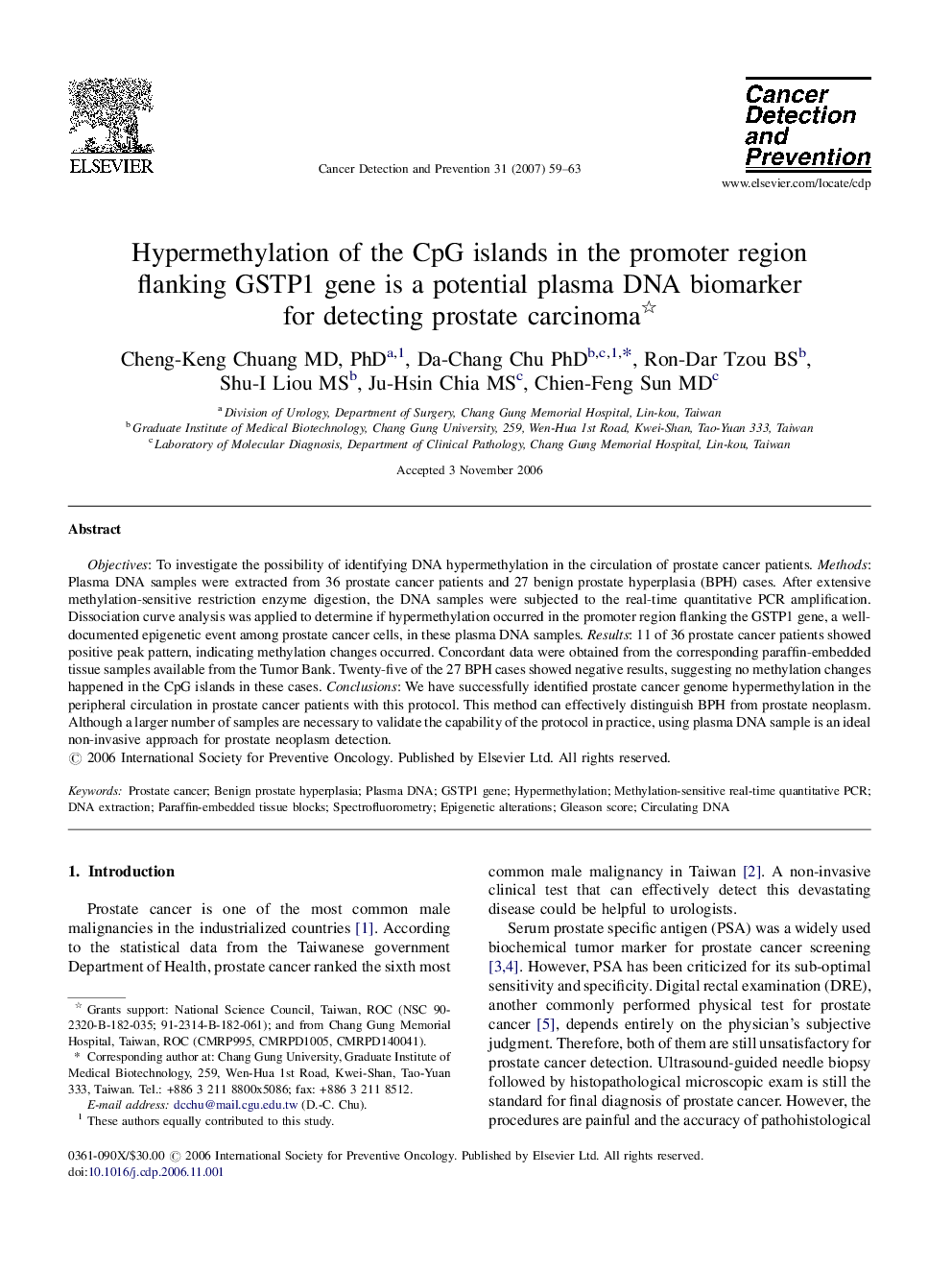| Article ID | Journal | Published Year | Pages | File Type |
|---|---|---|---|---|
| 2108624 | Cancer Detection and Prevention | 2007 | 5 Pages |
Objectives: To investigate the possibility of identifying DNA hypermethylation in the circulation of prostate cancer patients. Methods: Plasma DNA samples were extracted from 36 prostate cancer patients and 27 benign prostate hyperplasia (BPH) cases. After extensive methylation-sensitive restriction enzyme digestion, the DNA samples were subjected to the real-time quantitative PCR amplification. Dissociation curve analysis was applied to determine if hypermethylation occurred in the promoter region flanking the GSTP1 gene, a well-documented epigenetic event among prostate cancer cells, in these plasma DNA samples. Results: 11 of 36 prostate cancer patients showed positive peak pattern, indicating methylation changes occurred. Concordant data were obtained from the corresponding paraffin-embedded tissue samples available from the Tumor Bank. Twenty-five of the 27 BPH cases showed negative results, suggesting no methylation changes happened in the CpG islands in these cases. Conclusions: We have successfully identified prostate cancer genome hypermethylation in the peripheral circulation in prostate cancer patients with this protocol. This method can effectively distinguish BPH from prostate neoplasm. Although a larger number of samples are necessary to validate the capability of the protocol in practice, using plasma DNA sample is an ideal non-invasive approach for prostate neoplasm detection.
